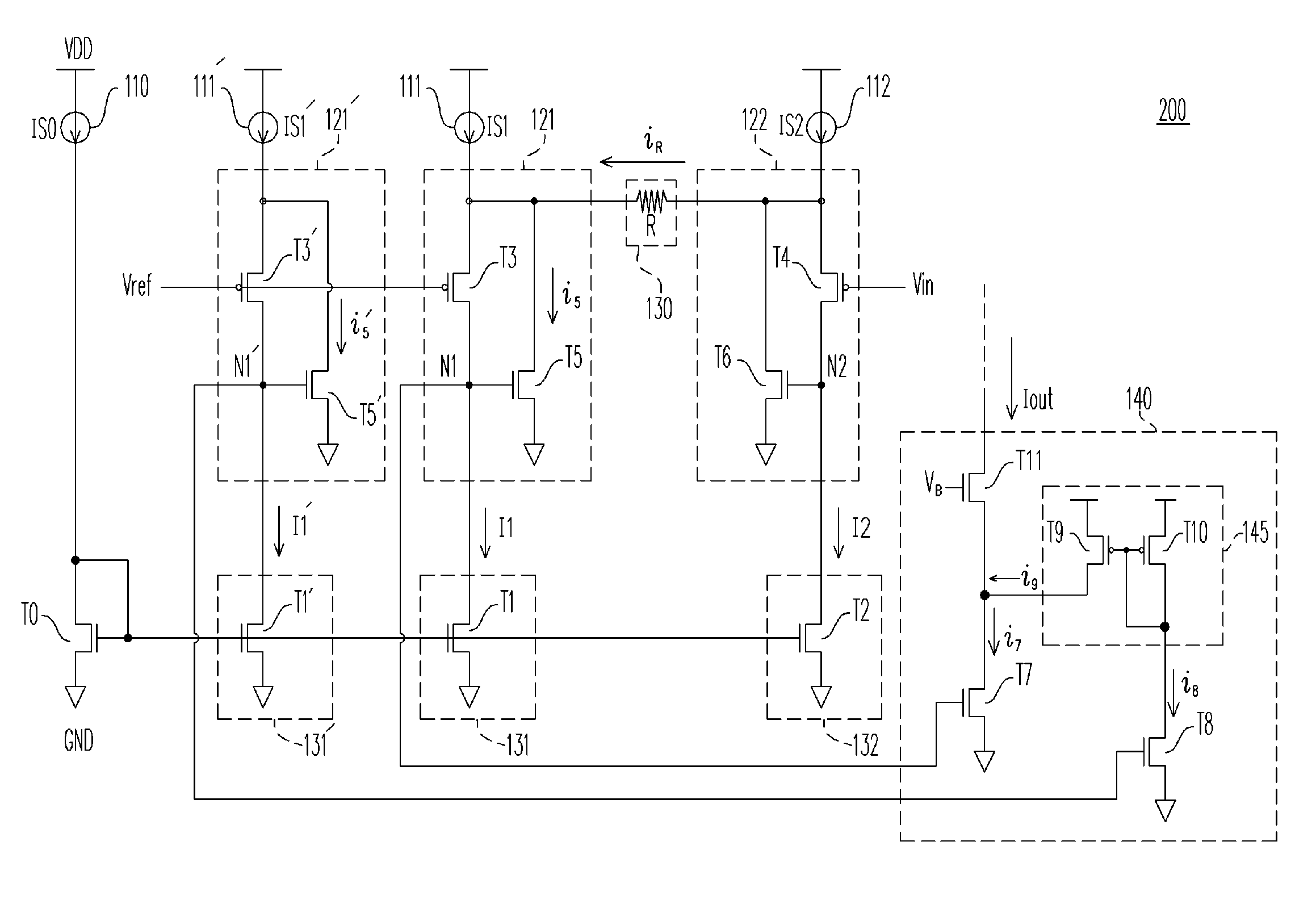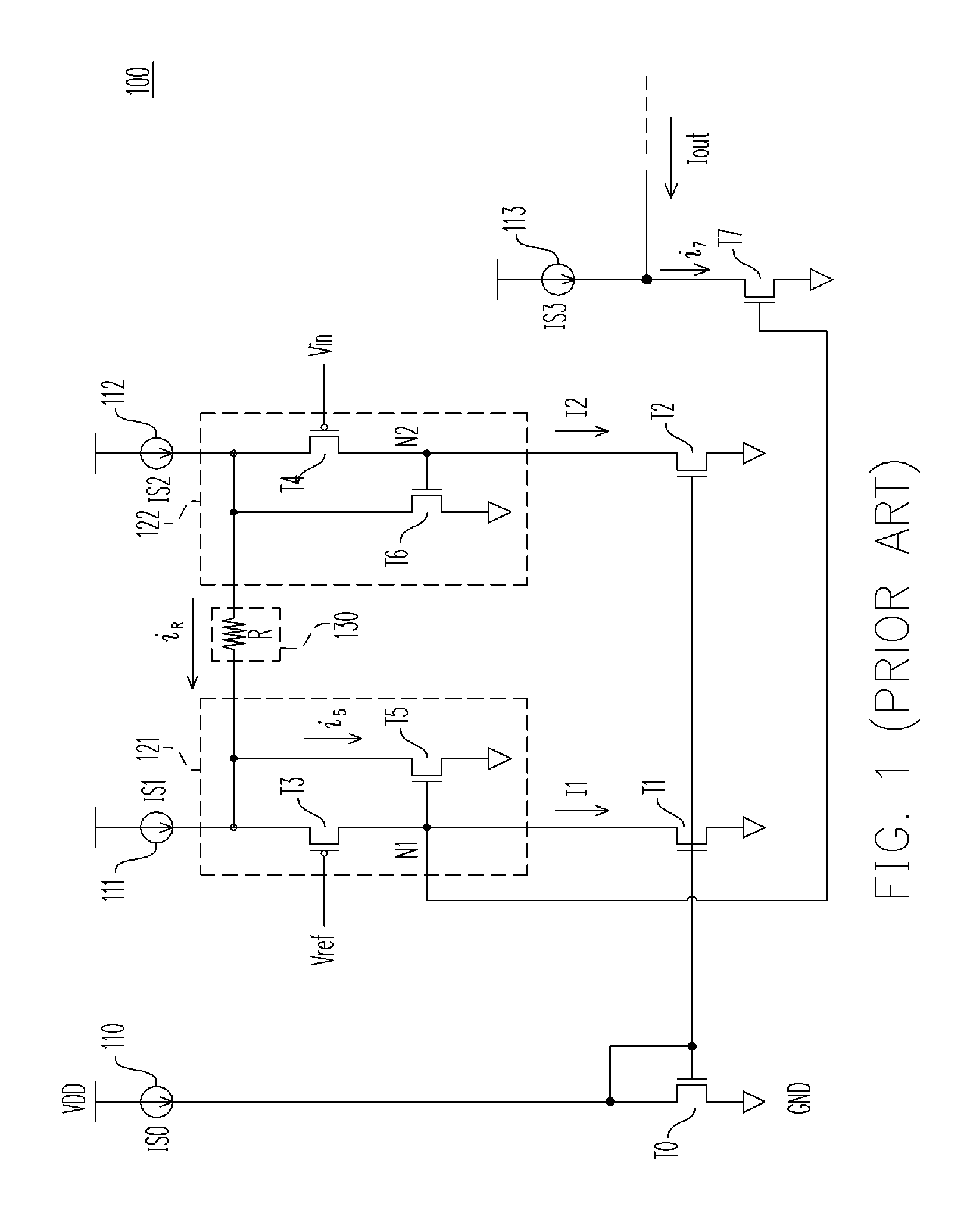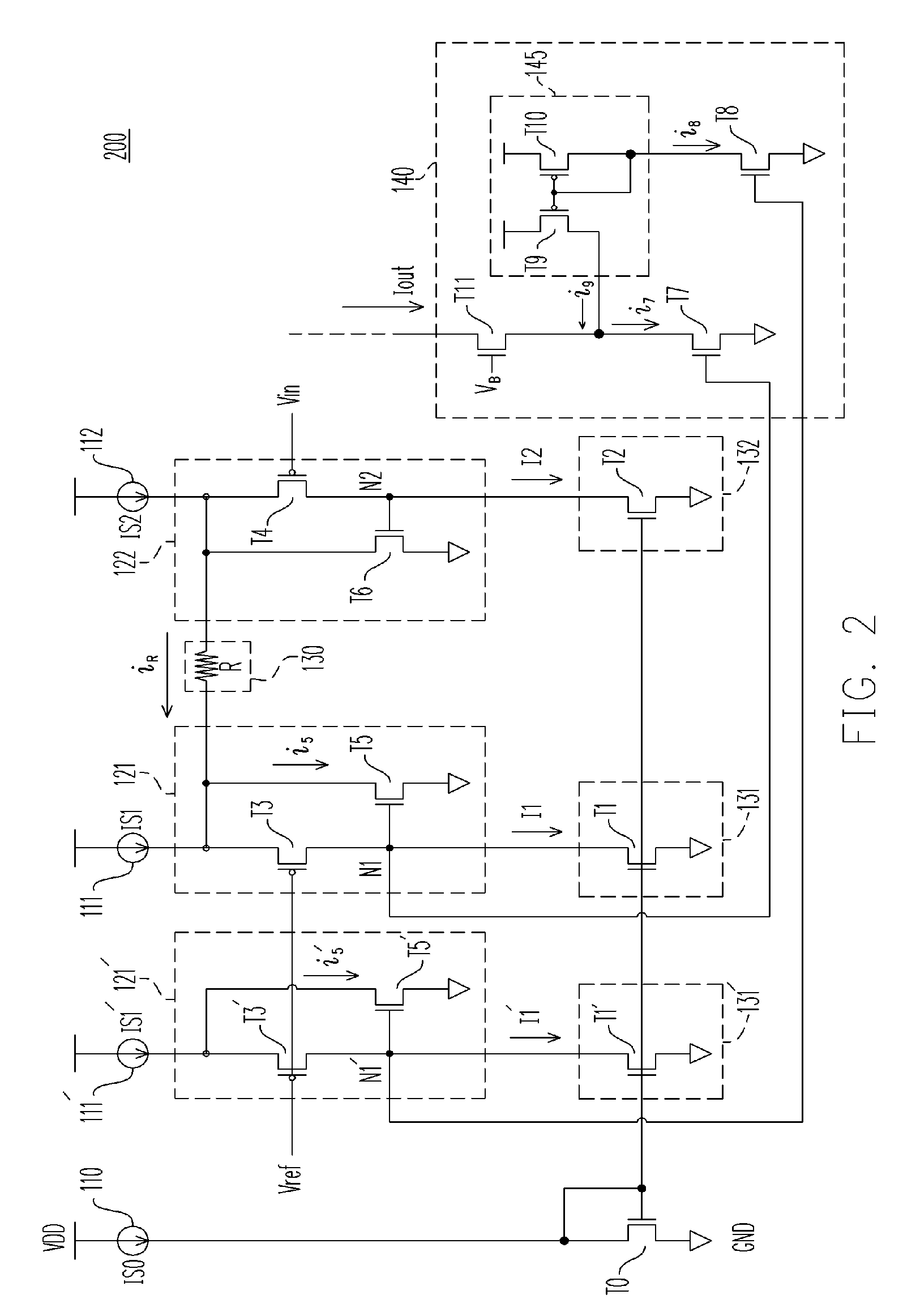Operational transconductance amplifier
a transconductance amplifier and operation technology, applied in the direction of amplifiers with semiconductor devices only, differential amplifiers, amplifiers with semiconductor devices/discharge tubes, etc., can solve the problem of difficult to precisely process the ac current component containing useful information from the output current following circui
- Summary
- Abstract
- Description
- Claims
- Application Information
AI Technical Summary
Benefits of technology
Problems solved by technology
Method used
Image
Examples
Embodiment Construction
[0020]FIG. 2 is a schematic circuit drawing of an operational transconductance amplifier (OTA) according to an embodiment of the present invention. The OTA is capable of eliminating the static current component contained in the output current thereof and overcoming the drawback of the conventional circuit where the static current component is hard to be eliminated completely since the output current thereof is affected by the channel length modulation of transistors.
[0021]Referring to FIG. 2, an OTA 200 includes a first current source 111, a second current source 112, a third current source 111′, a first current sink 131, a second current sink 132, a third current sink 131′, a first differential unit 121, a second differential unit 122, a third differential unit 121′, a voltage-to-current converting unit 130 and a current subtraction device 140. Wherein, the differential units 121 and 122, the voltage-to-current converting unit 130 and the bias circuit related thereto form an OTA 10...
PUM
 Login to View More
Login to View More Abstract
Description
Claims
Application Information
 Login to View More
Login to View More - R&D
- Intellectual Property
- Life Sciences
- Materials
- Tech Scout
- Unparalleled Data Quality
- Higher Quality Content
- 60% Fewer Hallucinations
Browse by: Latest US Patents, China's latest patents, Technical Efficacy Thesaurus, Application Domain, Technology Topic, Popular Technical Reports.
© 2025 PatSnap. All rights reserved.Legal|Privacy policy|Modern Slavery Act Transparency Statement|Sitemap|About US| Contact US: help@patsnap.com



